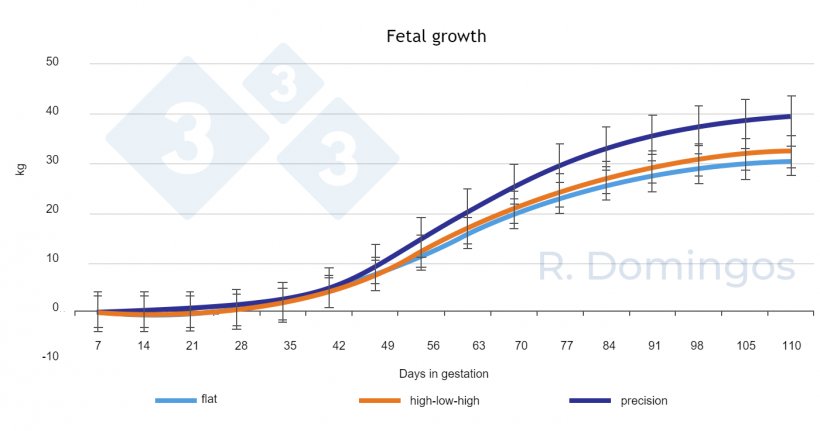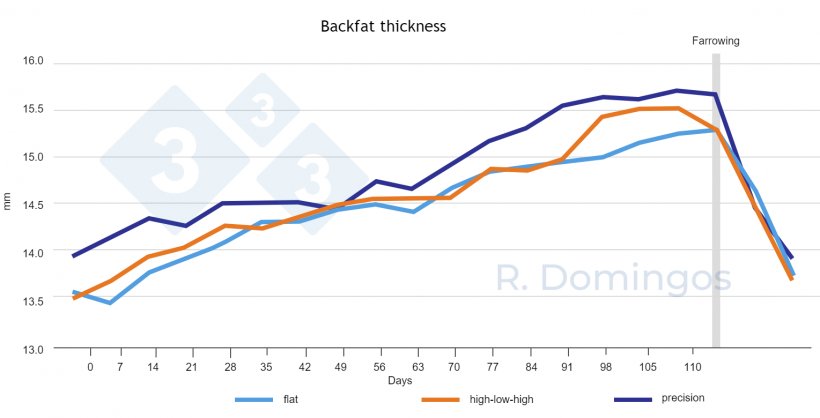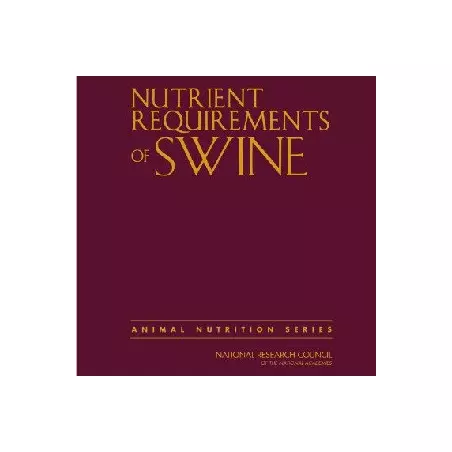The concept of precision nutrition and the goal of improving the efficiency of essential nutrient utilization is considered an innovative technique in swine research in recent years.
Precision feeding for breeding sows
The body condition of a gestating sow can also directly influence her performance during lactation. Excess energy can cause obesity at farrowing, leading to reduced voluntary intake and an excessive mobilization of body reserves during lactation (Sinclair et al., 1998; Kim et al., 2009).

Normally, sows are fed the same diet throughout gestation, with no change in nutritional levels or even in the amount of feed provided, however, their nutritional requirements do change throughout gestation. (Dourmad et al., 2008; Gaillard et al., 2020; Gaillard y Dourmad, 2022).
In some cases, the gestation phase is subdivided to focus on the different requirements of each period. An example is the use of the "high-low-high" (HLH) concept, where gestation is divided into thirds: the first focuses on recovering the sow's body condition, the second on mammary gland development and maintenance, and finally the third on milk production and exponential fetal growth.
Another factor that can influence feeding and nutrient intake in the gestation phase is group housing of sows since competition for feed can lead to fights, hierarchies, and large variations in the body condition between the sows in this phase. A great alternative that has been applied in production is modernizing feeding systems or the use of AIPFs (automatic intelligent precision feeders), which allow us to supply the right feed to the sows in an individualized way, that is, without fights or competition for the feed, facilitating the application of the concept of precision feeding, another strategy that has been widely studied in the last few years.
In a study conducted in our NEPSUI research unit (Institute of Agricultural Sciences of the Federal University of Minas Gerais, ICA-UFMG), which aimed to investigate the effects of precision feeding in high-performing gestating sows, it was shown that providing the right balance of amino acids and energy at the correct periods of gestation can greatly benefit performance. The study compared the effect of using different feeding curve models in the gestation phase, such as the flat curve, the HLH, and the application of a nutrient prediction model focused on the daily requirements of the sow (Domingos et al, 2022).
Precision feeding was observed to be more efficient compared to the other diets. Fetal growth was greater than with the other forms of nutrition (Figure 1).

Figure 1. Influence of feeding strategy (flat curve, high-low-high, or precision) during gestation on fetal development.
An adequate feed supply based on the daily needs of the sow not only affects fetal growth but also tissue deposition and milk production. The study showed that milk production was higher than the other treatments by approximately 1.2 liters per day, reflecting the more pronounced mobilization of body tissue deposited during gestation calculated by fat deposition and mobilization (Figure 2).

Figure 2. Influence of feeding strategy (flat curve, high-low-high, or precision) on the dynamics of deposition and mobilization of body reserves during gestation and lactation.
Therefore, strategies aimed at maximizing performance can be promising alternatives in production. The use of modeling within precision feeding is an outlet that can provide many benefits to animals and, primarily, to producers. The results show that precision feeding based on dynamic daily lysine:energy ratios during gestation is very beneficial for high-performing sows, as it favors nutrient availability for sow body growth and for fetal and mammary gland development.
The concept of precision feeding is becoming a tool present in the day-to-day operation of pig farms in Brazil and around the world, aiming to achieve sustainable and efficient pig production and increase economic returns for producers. 






